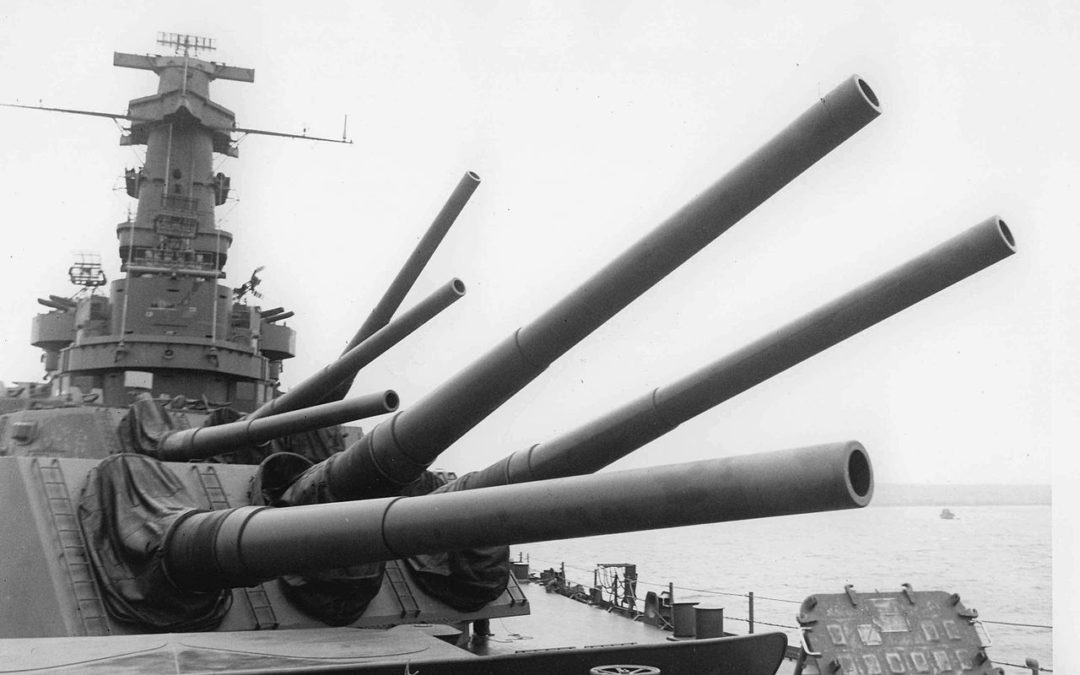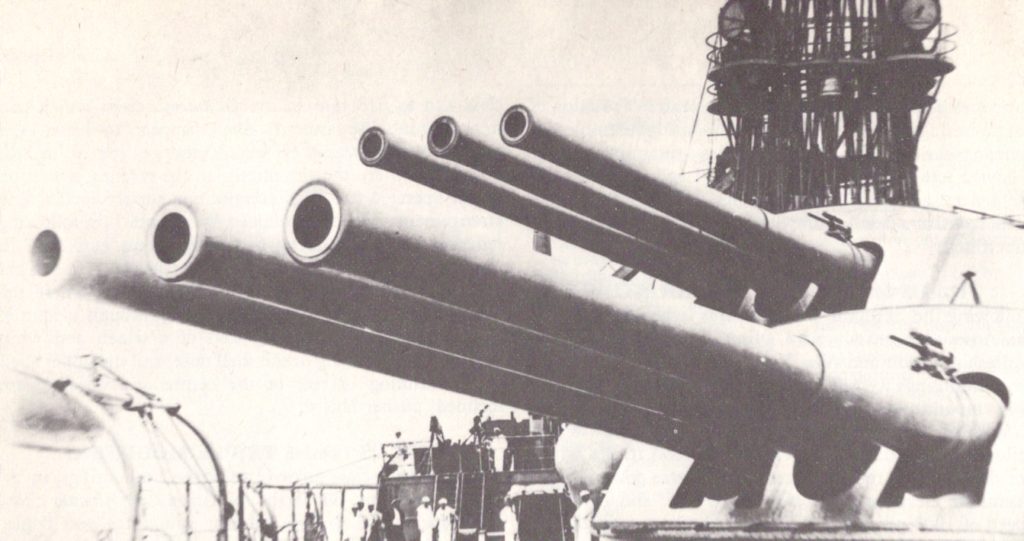Perhaps one of the most common simplifications when discussing warships occurs when discussing their turret styles. For instance, a battleship might be described as having twin turrets, triple turrets, or even quadruple turrets. This of course refers to the number of gun barrels inside of the turret. However, the matter gets slightly more complex when the phrases two-gun turret or three-gun turret are introduced. Not many people realize that triple turret and three-gun turret, while sounding interchangeable, actually describe two completely different turret styles. So what are the differences in the triple turrets vs. three-gun turrets argument? Lets break it down.
Triple Turrets vs. Three-Gun Turrets: The Difference
To put it simply, a turret is classified as a triple or a three-gun mount based on the guns it carries and how they elevate. A triple gun turret has all three gun barrels elevate and depress together as a single unit. In contrast, a three-gun turret has the barrels mounted individually. This allows each gun to elevate and depress on its own, independently of the others. This applies for other turret designs such as twin / two-gun turrets and quadruple / four-gun turrets.
So now that we know the difference between these mountings, what were the benefits and disadvantages of each.
Twin, Triple, and Quadruple Turrets
Their were several benefits to having the guns all mounted or sleeved together as a single unit. First and foremost, the turrets were generally simpler in construction. The guns utilized a common system for elevating the gun barrels which made the turret less complex, cheaper, and at times more reliable.
Due to the fact that the guns could be mounted closer together, these turrets were of much smaller size and weight compared to models where the guns were individually mounted. In addition to a smaller turret, the barbettes and supporting structure were also smaller. A triple turret using the same guns as a three-gun turret could easily weigh several hundred tons lighter due to its smaller size and/or less internal mechanisms.
Early dreadnoughts and cruisers typically used turrets with the guns mounted together. Generally this was done for the simplicity and cost reasons. Combat typically took place at shorter ranges, which did not require the turrets to elevate as much. Even with a slightly slower gun crew, rate of fire could still be largely maintained.
Two-Gun, Three-Gun, Four-Gun Turrets
While these turret mountings were generally heavier and more mechanically complex, they offered several improvements over their peers.
First and foremost, having the guns operate independently of one another allowed each gun to operate at its own pace without holding up the others. In a turret where the guns are mounted together, the guns can only fire as fast as the slowest gun crew. Until loading was finished on all the guns, the barrels could not elevate. Having the guns operating independently allows the crew of each gun to fire at their own pace, increasing the sustained rate of fire for that turret.
Having the guns mounted individually also added a safety factor. During combat, if a gun were fail and repairs were needed, the gun crew could set about repairing the gun while the others continued to function. This was much more difficult in turrets where the guns were mounted together as the broken gun was still elevating with the others, making repairs hazardous and more difficult.
As surface warships got more powerful, they began adopting guns that were individually sleeved. Combat ranges were increasing to the point that guns had to elevate higher, making it a disadvantage to wait for a gun to load.
Final Thoughts
Though there is a technical difference between twin vs. two-gun turret or triple vs. three-gun turret, it is important to remember that many publications use the phrases interchangeably. Turrets with two individual guns are often still labeled as twin turrets while three-gun turrets are still called triple turrets. So while you now know the differences between these turrets, don’t expect every publication to abide by these terminologies.
Further Links
Support us on Social Media:
Want to help the site continue to expand? Support us on Patreon.
Great Reads:
Who Won the Battle of Jutland?
China’s Newest Warship: The Type 55 Destroyer





Recent Comments